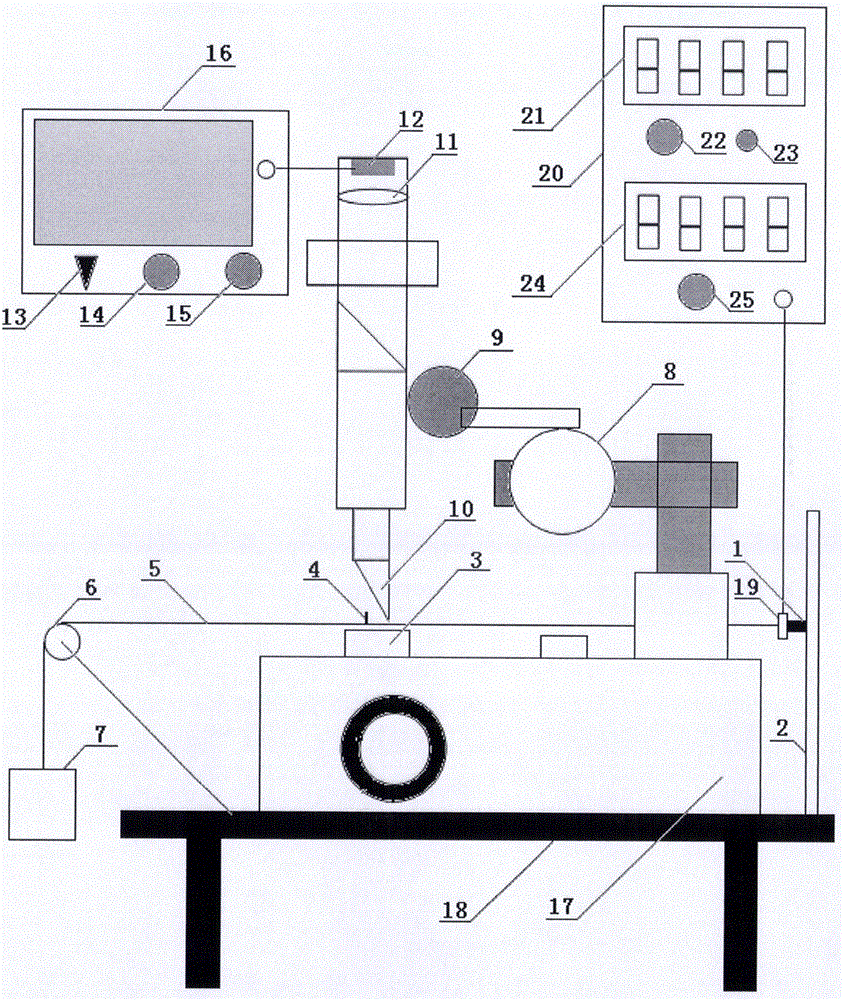Experimental device and method for measuring Young's modulus of metallic wire by using resonant principles
A technology of Young's modulus and experimental device, which is used in teaching models, educational appliances, and analysis of solids using sonic/ultrasonic/infrasonic waves, etc., can solve the problems of wrong data, difficult adjustment of telescopes, and single principle, and achieves enhanced solutions. The ability to ask questions, cultivate the spirit of innovation, and enrich the effect of experimental content
- Summary
- Abstract
- Description
- Claims
- Application Information
AI Technical Summary
Problems solved by technology
Method used
Image
Examples
Embodiment Construction
[0037] Among the figure, a vertical support 2 is set at one end of the test bench 18, and an inclined support 6 with a pulley on the top is set at the other end. A chuck 1 and a vibrator 19 are arranged on the vertical support 2. The chuck 1 can be The vertical support 2 moves to change the position. One end of the metal wire 5 is connected with the chuck 1 and the vibrator 19, and the other end is connected to the iron block 7 across the pulley on the inclined support 6 with a pulley on the top. A positioning marker point 4 . The exciter 19 is connected to the sinusoidal signal source 20 through the interface, and the sinusoidal signal voltage amplitude output by the sinusoidal signal source 20 can be continuously adjusted by the sinusoidal signal voltage amplitude adjustment knob 25, and can be displayed on the sinusoidal signal voltage amplitude display screen 24; The frequency of the sinusoidal signal can be continuously adjusted through the coarse sinusoidal signal freque...
PUM
 Login to View More
Login to View More Abstract
Description
Claims
Application Information
 Login to View More
Login to View More - R&D
- Intellectual Property
- Life Sciences
- Materials
- Tech Scout
- Unparalleled Data Quality
- Higher Quality Content
- 60% Fewer Hallucinations
Browse by: Latest US Patents, China's latest patents, Technical Efficacy Thesaurus, Application Domain, Technology Topic, Popular Technical Reports.
© 2025 PatSnap. All rights reserved.Legal|Privacy policy|Modern Slavery Act Transparency Statement|Sitemap|About US| Contact US: help@patsnap.com



